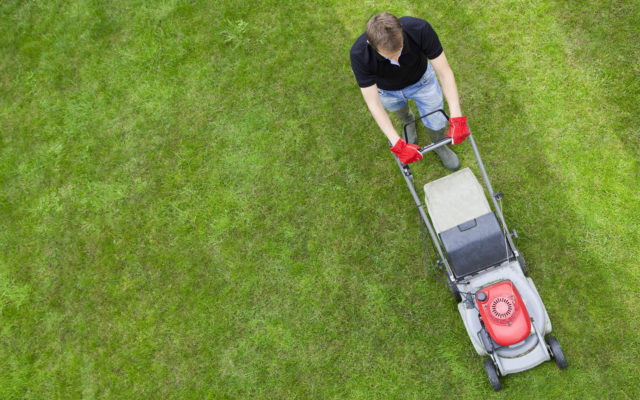Here’s How to Get Those Satisfying Stripes When Mowing Your Lawn

Have you ever tried and failed to get those satisfying baseball field-style stripes when you mow your lawn? “Popular Mechanics” just posted some tips on how to do it right.
Those stripes happen when you go back and forth in opposite directions, because the grass lays in different directions. So you’re already doing that part right. Here are the four other things that matter most . . .
1. The type of grass. Lawns that are mostly one single type tend to have neater-looking stripes. Some bags of grass seed have multiple types, which probably won’t help much unless you’re putting in a new lawn. But if it seems like your grass never gets good stripes, that might be one reason.
2. The height you cut it plays a role. You won’t have good stripes if you cut your grass really short. It needs to be long enough to be pushed over and bent a little. It general, three to three-and-a-half inches is the best height for stripes.
3. Make sure your mower has a flap in back. It’s the lawnmower equivalent to mudflaps on trucks. Most push-mowers have them to prevent rocks from kicking up and hitting your legs. But you’ll get better stripes if there’s also a weighted bar at the bottom that drags across the ground.
You can add one to your current flap. Or there are specific products you can buy that attach to the back of your mower.
4. Make sure your technique is on point. Once you’re sure you have the right grass, right height, and right equipment, here’s how to get straight lines . . .
Don’t just start at one side of your lawn and do a rectangle. Stripes tend to look best when they’re cut at an angle to the road or sidewalk. But that means not every stripe is the same length.
Start with the longest pass you’ll need to make, which is usually a strip near the middle. Pick a starting point AND an end point, like a tree or post in the distance.
Keep staring at that target to get the straightest line possible. If you look down too much, you’ll make tiny corrections and start curving or zig-zagging. Then once you have that first strip done, use it as your guideline.



